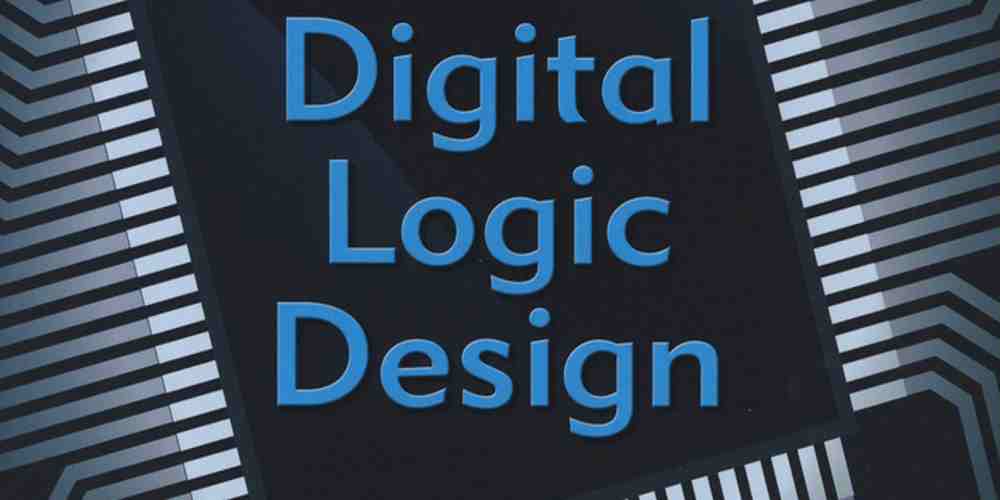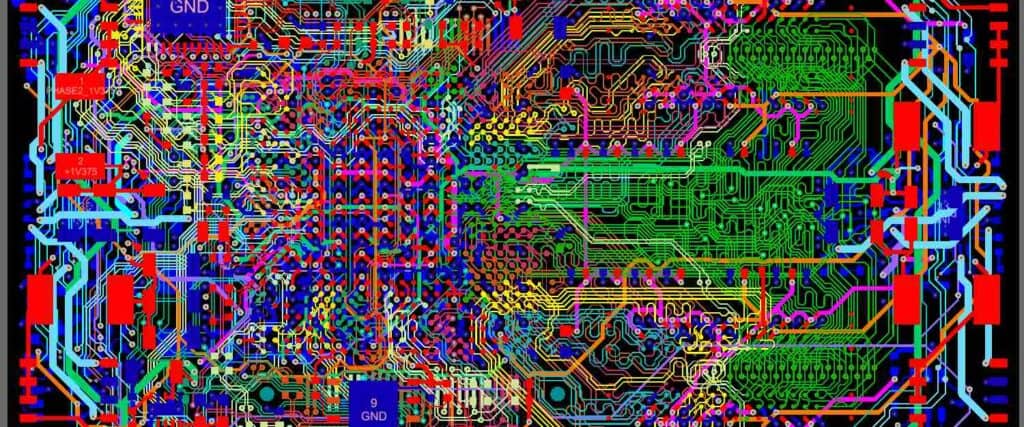Digital electronics design is a field that involves designing, testing, and implementing digital circuits and systems. The use of digital electronics has become prevalent in many industries, including telecommunications, computing, and consumer electronics. The design of digital circuits and systems involves the use of digital logic gates, which are the building blocks of digital circuits.
The design process typically involves several stages, including conceptualization, design, simulation, and testing. During the conceptualization stage, designers determine the requirements for the circuit or system and develop a plan for its implementation. In the design stage, designers create a schematic diagram of the circuit or system and select the appropriate components. Simulation is then used to test the circuit or system to ensure that it meets the desired specifications. Finally, the circuit or system is tested in the real world to ensure that it functions as intended.

Fundamentals of Digital Electronics Design
Boolean Algebra
Boolean algebra is a mathematical system used to analyze and simplify digital circuits. It uses two values, 0 and 1, to represent logic levels. Boolean operations include AND, OR, and NOT. These operations can be combined to create more complex logic functions. The laws of Boolean algebra provide a set of rules to simplify these functions.
Combinational Logic
Combinational logic circuits are digital circuits that produce an output based on the current input. The output is determined solely by the input and the logic function of the circuit. Examples of combinational logic circuits include adders, multiplexers, and decoders.
Sequential Logic
Sequential logic circuits are digital circuits that use the current input and the previous state to produce an output. The output is determined by the current input and the current state of the circuit. Examples of sequential logic circuits include flip-flops, registers, and counters.
In digital electronics design, it is essential to have a strong understanding of Boolean algebra, combinational logic, and sequential logic. These concepts provide the foundation for designing digital circuits. By applying these concepts, designers can create complex circuits that perform specific functions.
Design Process
Digital electronics design is a complex process that involves several stages. Each stage requires careful planning, analysis, and execution to ensure that the final product meets the desired specifications.
Specification
The first stage of the design process involves defining the specifications of the digital system. This includes identifying the requirements of the system, such as its functionality, performance, and power consumption. The specifications should be precise, measurable, and achievable within the given constraints.
Analysis
The next stage is the analysis of the system. This involves evaluating the feasibility of the specifications and identifying any potential issues or limitations. The analysis may include mathematical modeling, simulation, and testing to ensure that the system can perform as expected.
Synthesis
Once the specifications and analysis are complete, the next stage is synthesis. This involves designing the system architecture and selecting the appropriate components, such as logic gates, registers, and memory elements. The design must be optimized for performance, power consumption, and cost.
Simulation
After the synthesis stage, the next step is simulation. This involves modeling the system using specialized software tools to verify its functionality and performance. The simulation may include testing the system under different operating conditions, such as varying input signals and environmental factors.
Implementation
The final stage of the design process is implementation. This involves physically building the digital system using the selected components and testing it to ensure that it meets the specifications. The implementation may include designing the printed circuit board, assembling the components, and testing the system under different conditions.
In conclusion, the digital electronics design process is a complex and iterative process that requires careful planning, analysis, and execution. By following the stages of specification, analysis, synthesis, simulation, and implementation, designers can create digital systems that meet the desired specifications and performance requirements.
Advanced Topics

Field-Programmable Gate Arrays (FPGAs)
Field-Programmable Gate Arrays (FPGAs) are integrated circuits that can be reprogrammed after manufacturing. FPGAs are highly configurable and can be used to implement complex digital systems. FPGAs are commonly used in digital signal processing, video processing, and high-speed communication systems.
FPGAs consist of logic blocks that can be connected in different ways to implement different logic functions. The logic blocks can be programmed using Hardware Description Languages (HDLs) like Verilog or VHDL.
Application-Specific Integrated Circuits (ASICs)
Application-Specific Integrated Circuits (ASICs) are integrated circuits designed for a specific application. ASICs are designed to perform a specific function and are optimized for performance, power consumption, and area.
ASICs are commonly used in high-performance computing, networking, and communication systems. ASICs can be designed using HDLs like Verilog or VHDL.
ASICs can be expensive to design and manufacture, but they offer high performance and low power consumption.
Hardware Description Languages (HDLs)
Hardware Description Languages (HDLs) are programming languages used to describe digital circuits. HDLs are used to design digital systems and can be used to program FPGAs and ASICs.
HDLs are used to describe the behavior of digital circuits and are used to simulate and verify the functionality of digital systems. HDLs can be used to design complex digital systems and can be used to optimize the performance, power consumption, and area of digital systems.
HDLs are commonly used in digital electronics design and are an essential tool for designing FPGAs and ASICs. HDLs like Verilog and VHDL are widely used in the industry and are supported by many software tools.
Design Tools

Design tools are essential for digital electronics design. They help in the creation of schematics, hardware description languages, simulations, and layouts. The following are the main design tools used in digital electronics design:
Schematic Capture
Schematic capture is a design tool used to create graphical representations of electronic circuits. It allows designers to create schematics of circuits, which can be used to design printed circuit boards (PCBs). Schematic capture tools are essential for creating complex circuits, as they allow designers to visualize the circuit before creating the actual hardware.
Hardware Description Languages (HDLs) Tools
Hardware description languages (HDLs) are used to describe the behavior of digital circuits. They are used to design complex digital circuits, such as microprocessors and digital signal processors. HDLs provide a way to describe the behavior of a circuit using a programming language, which can then be used to create a schematic or simulation.
Simulation Tools
Simulation tools are used to simulate the behavior of digital circuits. They allow designers to test their circuits before creating the actual hardware. Simulation tools can be used to test the performance of a circuit, identify potential problems, and optimize the design. They are an essential tool for digital electronics design.
Layout Tools
Layout tools are used to create the physical layout of a circuit. They take the schematic or description of the circuit and create a physical representation that can be used to create a printed circuit board (PCB). Layout tools are essential for creating complex circuits, as they allow designers to create the physical layout of the circuit before creating the actual hardware.
In conclusion, design tools are essential for digital electronics design. They allow designers to create schematics, HDLs, simulations, and layouts. Schematic capture, HDLs, simulation, and layout tools are the main design tools used in digital electronics design.
Design for Testability

Design for Testability (DFT) is an essential aspect of digital electronics design. DFT refers to the process of designing a system or device that can be easily tested to ensure that it meets its design specifications. DFT is crucial in ensuring that the final product is reliable, efficient, and cost-effective.
One of the primary goals of DFT is to minimize the time and cost associated with testing. To achieve this, designers must ensure that the design is testable, meaning that it can be tested thoroughly and accurately. This involves designing the system or device with testability in mind, including the use of built-in self-test (BIST) and other diagnostic tools.
BIST is a technique used to test digital circuits by incorporating test circuitry within the design itself. This approach allows for the testing of the circuitry without the need for external test equipment, reducing the time and cost associated with testing.
Another important aspect of DFT is the use of boundary scan. Boundary scan is a technique that provides a standardized method for testing the interconnects between components on a printed circuit board (PCB). This technique allows for the testing of components that are not accessible through traditional test methods, such as those buried deep within the PCB.
In conclusion, DFT is an essential aspect of digital electronics design that ensures the final product is reliable, efficient, and cost-effective. By designing the system or device with testability in mind, designers can minimize the time and cost associated with testing, while also improving the overall quality of the final product.
Future of Digital Electronics Design

Digital electronics design has come a long way since its inception. With the advancement in technology, the future of digital electronics design is looking bright. Here are some of the potential advancements we can expect in the coming years:
1. Artificial Intelligence (AI)
AI is already transforming the digital electronics design industry. It is being used to automate the design process, which saves time and reduces errors. In the future, AI is expected to play an even bigger role in digital electronics design. It will help to create more complex designs, optimize power consumption, and improve the performance of electronic devices.
2. Internet of Things (IoT)
IoT is the interconnection of devices and objects to the internet. It is already changing the way we live and work. In the future, IoT will have a significant impact on digital electronics design. It will lead to the creation of more intelligent devices that can communicate with each other and with the internet. This will require new design techniques and protocols to ensure the security and reliability of these devices.
3. Quantum Computing
Quantum computing is a new technology that promises to revolutionize digital electronics design. It uses quantum bits (qubits) instead of classical bits to perform calculations. This allows for much faster and more efficient computing. In the future, quantum computing will enable the design of more complex and powerful electronic devices.
4. Wearable Technology
Wearable technology is becoming increasingly popular. It includes devices such as smartwatches, fitness trackers, and augmented reality glasses. In the future, wearable technology will become even more advanced. This will require new design techniques to ensure that these devices are small, lightweight, and energy-efficient.
In conclusion, the future of digital electronics design is looking bright. Advancements in AI, IoT, quantum computing, and wearable technology will lead to the creation of more intelligent, efficient, and powerful electronic devices.

